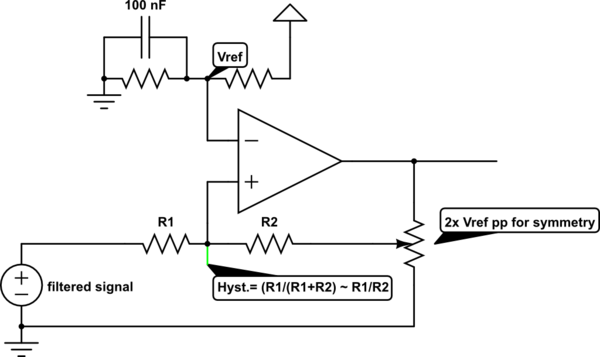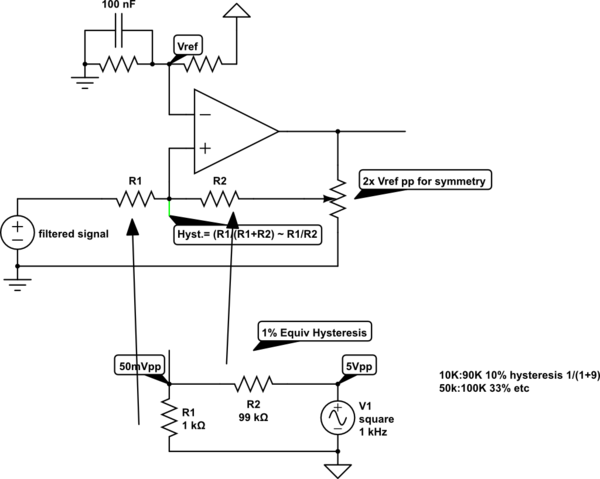The solution for hysteresis uses the same "design logic" with R ratios as you would for gain with negative feedback except using positive feedback.
- The key here is to introduce a controlled source impedance and feedback R to give the desired ratio , e.g. 1% 1K source 100k feedback
- The other key is you need to modify the full scale deflection of the output so that your input signal must be always mid-scale to the full scale output ( attenuated by R ratios if necessary)


simulate this circuitsimulate this circuit – Schematic created using CircuitLab
- if the input signal has a poor SNR then it is wise to analyze the "useful" bandwidth of the signal and design a filter to match that spectrum, and notch the noise if possible.
- e.g. 4th order 5Hz LPF using dual OP Amp and 4 RC values
- If the noise is "mechanical" then add stiffeners.
Note the LT1720 has 2~7mV hysteresis and your signal has 100 mVpp noise while your thresholds are only 200mVpp apart. So although possible to make a clean toggle, I would reduce the noise 5:1 and increase hysteresis to 20mV
